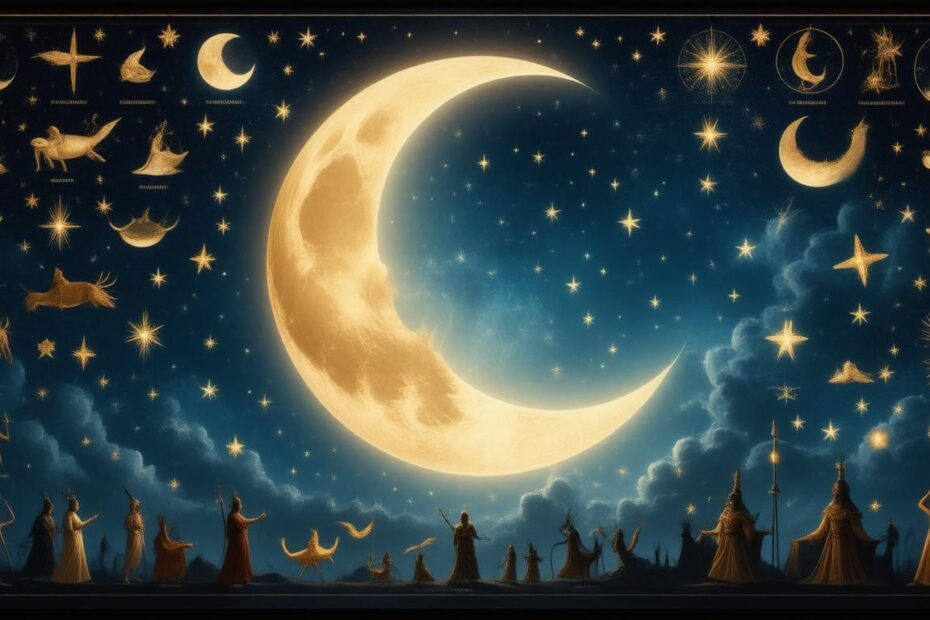🌟 Daily Awakening Quiz 🌟
The crescent moon has captured human imagination for millennia, serving as a powerful symbol in various cultures and belief systems. From influencing religious iconography to guiding spiritual practices, the crescent moon exemplifies the intricate relationship between celestial bodies and human spirituality. In this article, we explore the multifaceted meanings of the crescent moon across different contexts, focusing on its cultural significance, spiritual insights, and religious symbolism.
The Crescent Moon in Cultural Iconography
In many cultures, the crescent moon is not merely a lunar phase but a symbol that encompasses a variety of meanings. For instance, in Hinduism, the god Shiva is frequently depicted with a crescent moon adorning his head. This iconography symbolizes his mastery over time and embodies both creation and destruction — a duality that resonates with the nature of life itself.
In Christianity, the crescent moon is often associated with the Virgin Mary, particularly through the imagery of the Woman of the Apocalypse described in the Book of Revelation. Here, the crescent moon symbolizes Mary’s triumph over sin and her role as a divine protector. The crescent moon signifies her connection to femininity, purity, and the cyclical nature of life, echoing themes of fertility and renewal.
The crescent moon’s cultural resonance also extends to Islam. It serves as an emblem for the religion, decorating the minarets of mosques and representing the divine guidance in navigating life’s complexities. This association underscores the crescent moon as a universal symbol of spirituality, adaptability, and transition.
Symbolic Meanings of the Crescent Moon
1. Spiritual Guidance and Personal Reflection
The crescent moon’s symbolism transcends religious iconography, finding a place in personal spirituality. The waxing crescent, which occurs just after the new moon, is associated with creation, intention, and the nurturing of ideas. It acts as a reminder to focus on aspirations and to cultivate the dreams that were set during the new moon phase. This lunar phase invites individuals to align their thoughts and actions with their goals, fostering belief in their potential.
Conversely, the waning crescent encourages introspection and the release of burdens. As the moon’s light diminishes, individuals are prompted to let go of thoughts and behaviors that no longer serve them. This phase embodies the essential practice of detachment, creating space for new growth and development in line with one’s true path.
2. The Nature of Duality
The crescent moon embodies the concept of duality—representing both the waxing and waning phases of life. It highlights the balance between receiving and relinquishing, action and rest, hope and acceptance. This duality is beautifully encapsulated in the cycle of life, where beginnings and endings coexist, revealing the natural rhythm that guides existence.
3. Feminine Energy and Creation
Throughout various mythologies, the crescent moon has been tied to feminine energy and creation. It symbolizes the nurturing qualities often associated with femininity, such as intuition, the ability to nurture growth, and the cyclical nature of life. In many traditions, the crescent moon represents the goddess archetype, reinforcing the connection with the divine feminine.
Conclusion
The crescent moon’s rich tapestry of meanings illustrates its significance across multiple domains—cultural, spiritual, and religious. Whether seen as a guiding light for personal growth or an emblem of feminine strength, the crescent moon invites us to reflect on the cycles of life, reminding us of the moments of illumination and the lessons learned in darkness. As we gaze skyward, this iconic symbol continues to inspire and evoke a sense of wonder in our journeys of self-discovery and spiritual alignment.

